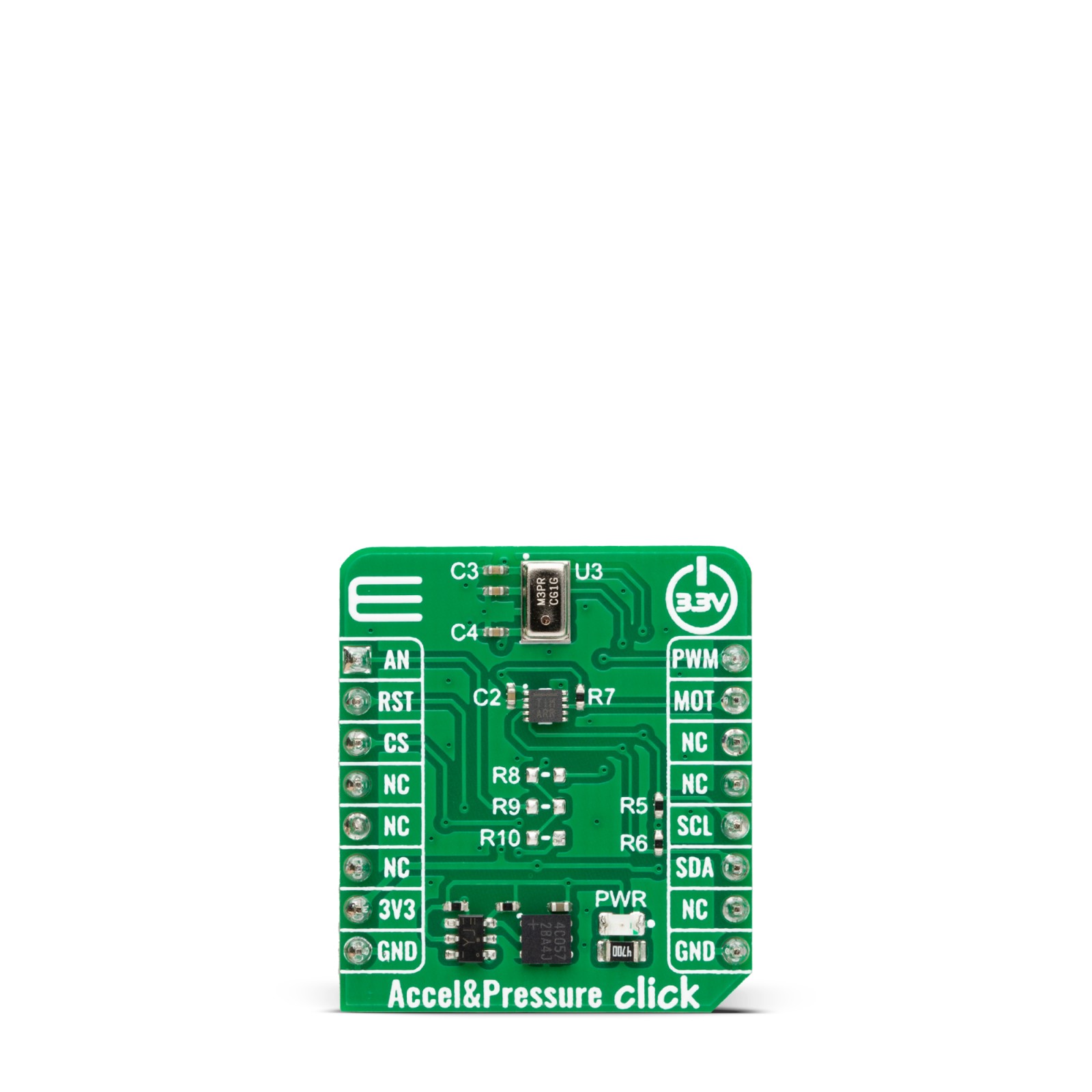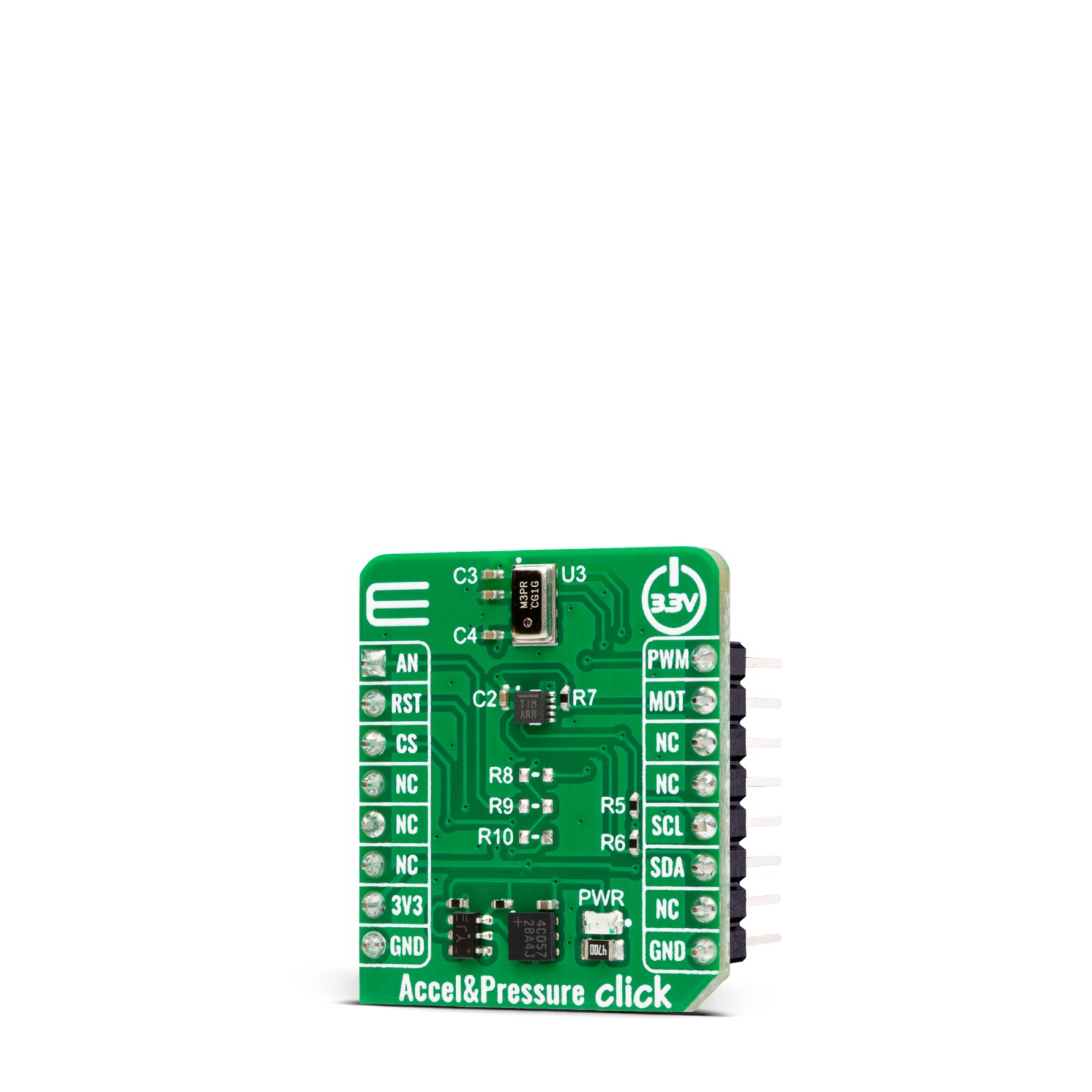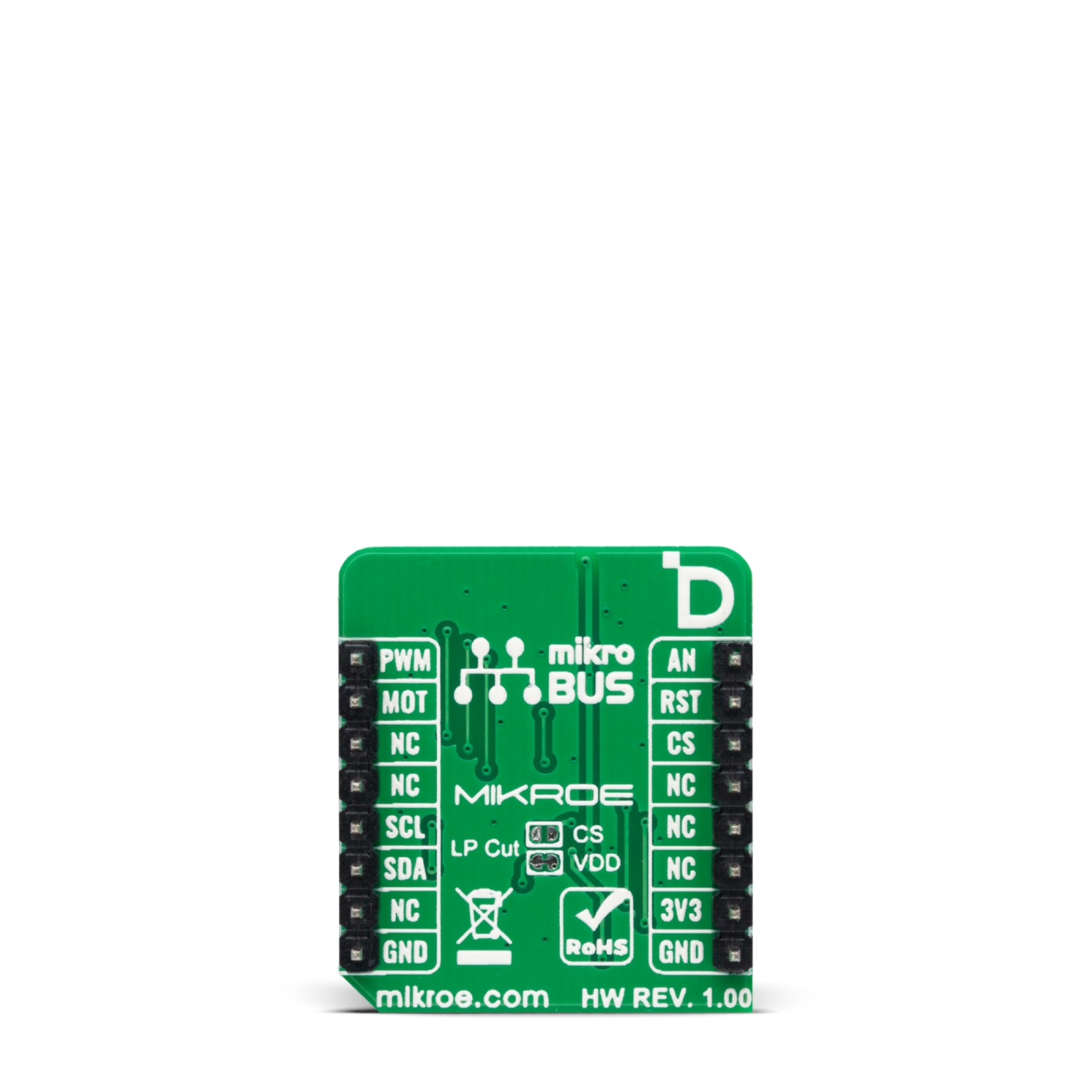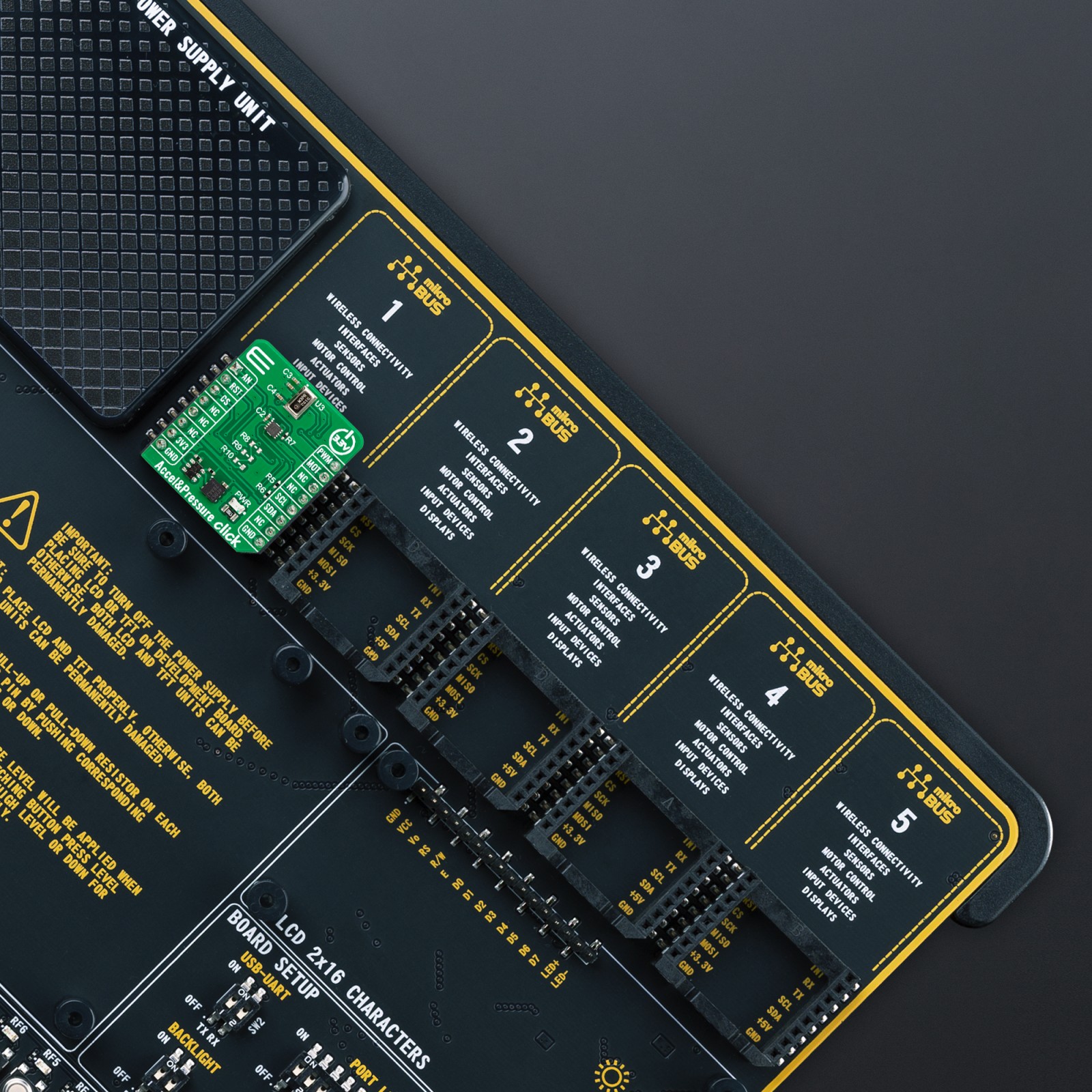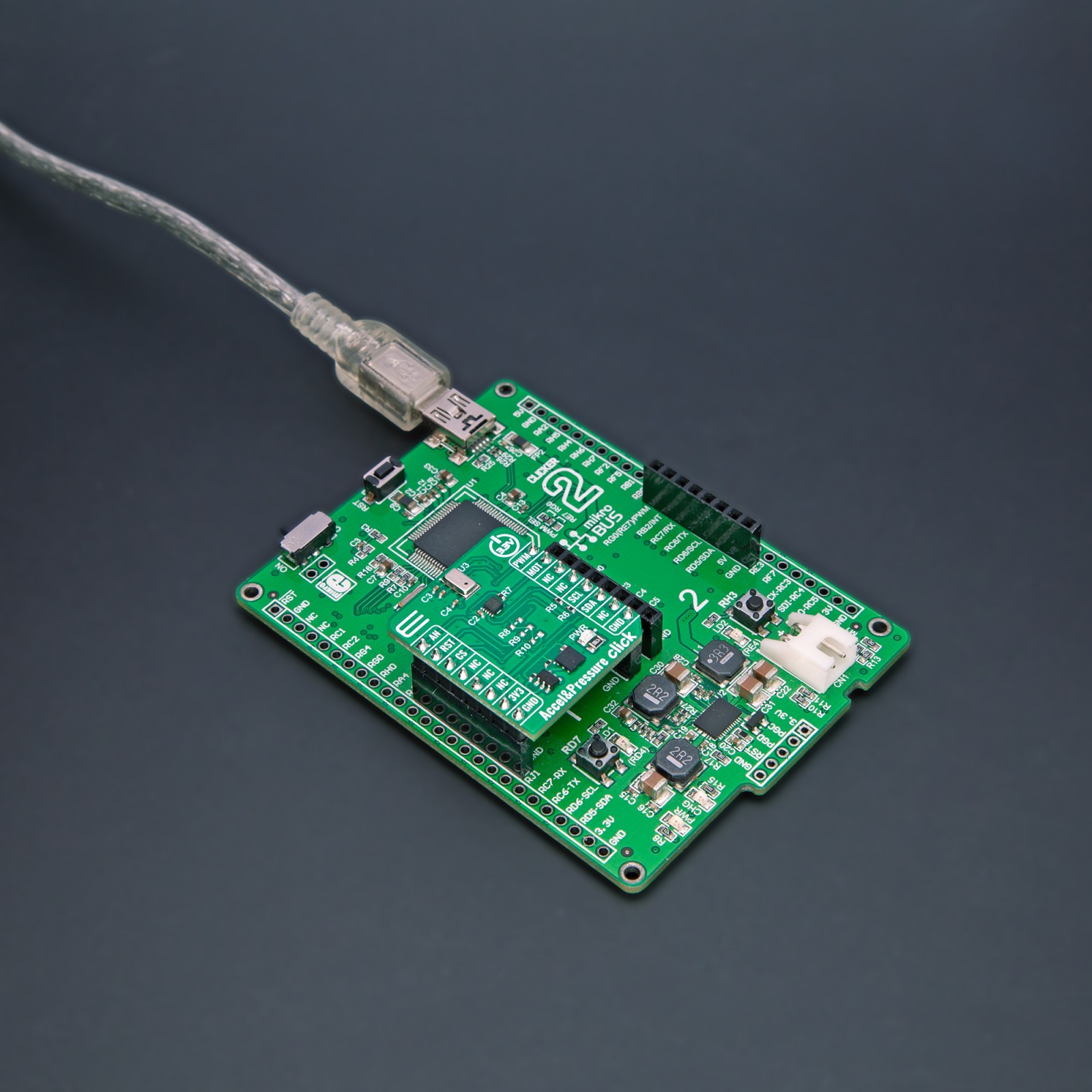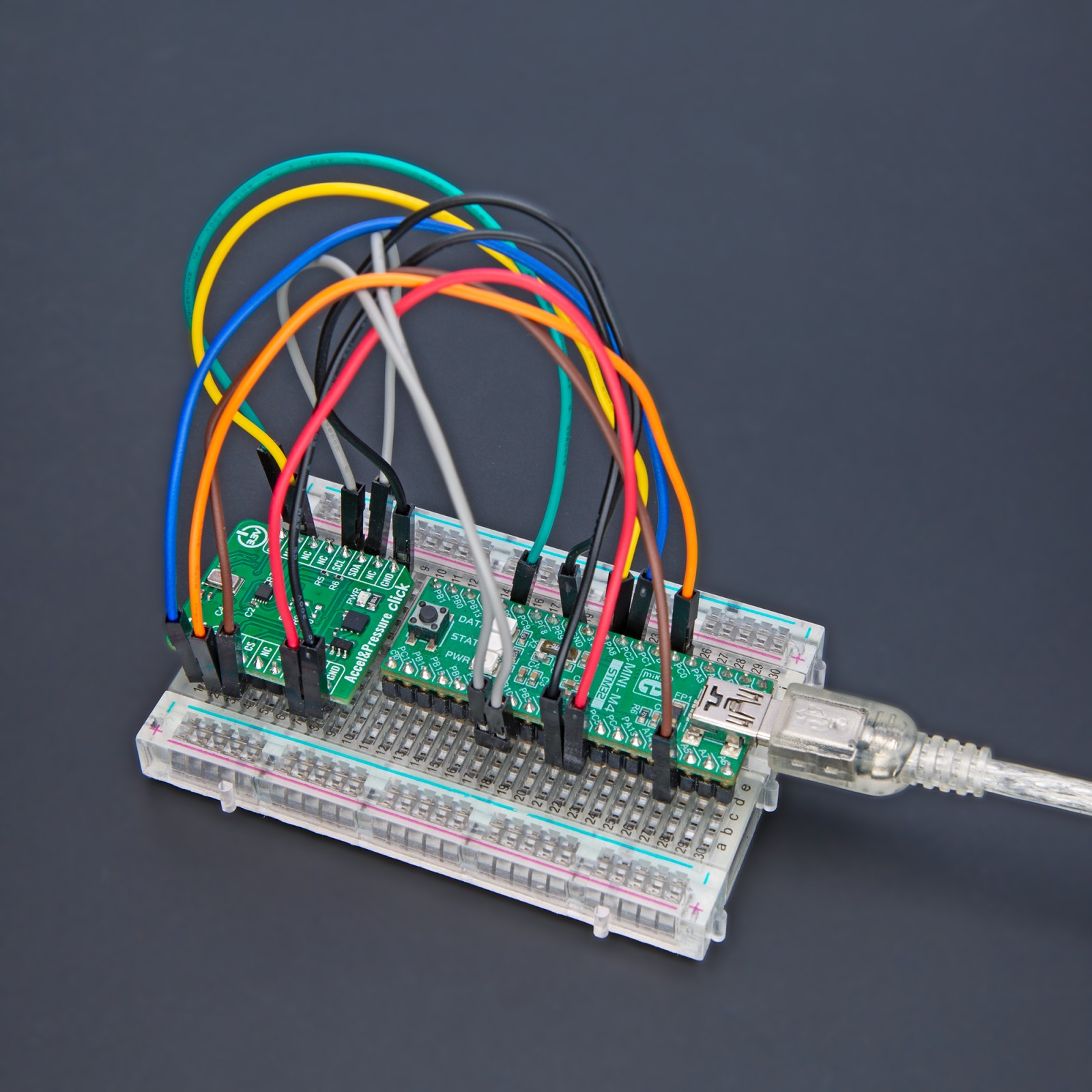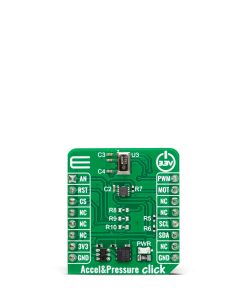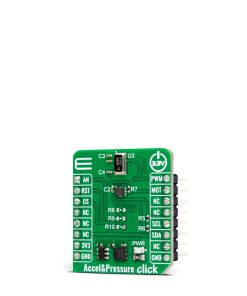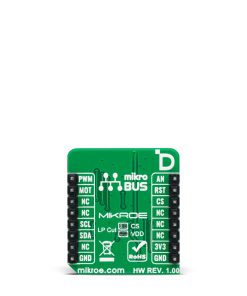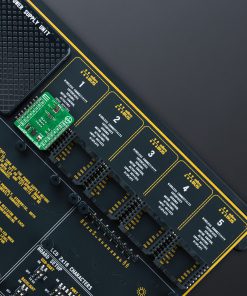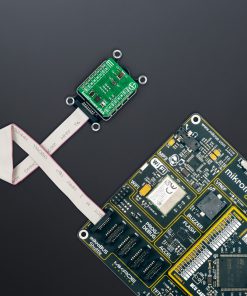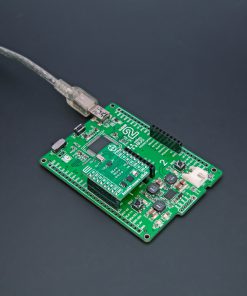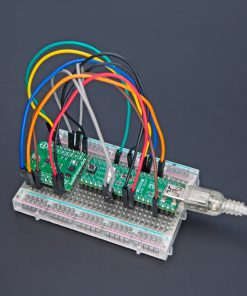Accel&Pressure Click is a compact add-on board representing a rate-of-climb sensing solution for your application. This board features the FXLS8974CF, a 3-axis low-g accelerometer, and the MPL3115A2, a precision pressure sensor with altimetry, both from NXP Semiconductor. Those two sensors are high-performance, low-power devices covering all of Earth’s surface elevations. By combining the acceleration and the barometric pressure data, you can easily determine the vertical velocity (the rate of climb) of the device on which the Accel&Pressure Click is integrated. This Click board™ makes the perfect solution for the development of vertical velocity applications and similar devices.
Accel&Pressure Click is fully compatible with the mikroBUS™ socket and can be used on any host system supporting the mikroBUS™ standard. It comes with the mikroSDK open-source libraries, offering unparalleled flexibility for evaluation and customization. What sets this Click board™ apart is the groundbreaking ClickID feature, enabling your host system to seamlessly and automatically detect and identify this add-on board.
 tRF Click
1 × R1,050.00
tRF Click
1 × R1,050.00  GSM Click
1 × R1,050.00
GSM Click
1 × R1,050.00  Accel Click
1 × R355.00
Accel Click
1 × R355.00  ccRF2 Click
1 × R800.00
ccRF2 Click
1 × R800.00 
